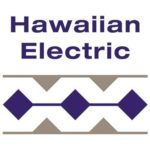
Hawai‘i has become the second U.S. state with a formal microgrid services tariff. Microgrid Knowledge, a national publication, reports the framework can be a model for other states.
The U.S. Department of Energy defines a microgrid as, “A group of interconnected loads and distributed energy resources within clearly defined electrical boundaries that act as a single controllable entity with respect to the grid, and that can connect and disconnect from the grid to enable it to operate in both grid-connected and ‘island’ mode.” Microgrids are best suited to areas prone to prolonged outages during weather events, with clusters of customers and potential availability of renewable energy resources.
Hawaiʻi’s Public Utilities Commission approved the microgrid services tariff last month, making Hawaiʻi second only to California, which approved a microgrid tariff in January. A microgrid – like a traditional, centralized electric grid – can generate, distribute, and regulate the supply of electricity to customers, but locally and on a smaller scale. Approval of the tariff will allow more microgrids to be used in emergencies by enabling customers to participate in or develop hybrid microgrids.
Hybrid microgrids include utility and non-utility assets within a microgrid boundary, which until now would have been initiated and developed only by the utility. Some customer-sited systems may already meet the technical requirements to be classified as a microgrid but customers with existing systems need not apply or change their operation. In the future, however, single customers or groups may opt to seek compensation for services microgrids can provide to their island’s entire electric system.
The new tariff defines two types of microgrids:
• Customer microgrid where customers infrastructure is exclusively used to supply all their own electricity needs during emergencies
• Hybrid in which a microgrid operator may combine utility-infrastructure and customerinfrastructure to supply electricity to microgrid members during an emergency
“The commission’s approval of the first stage of a microgrid services tariff underscores the importance of these technically advanced systems. They’ll provide more choices for customers and help Hawai‘i reach 100% renewable energy by 2045 with a grid that provides reliability and resilience for all,” said Ken Aramaki, Hawaiian Electric director of transmission and distribution and interconnection planning in a press release.